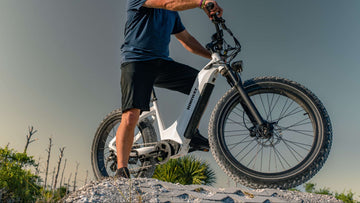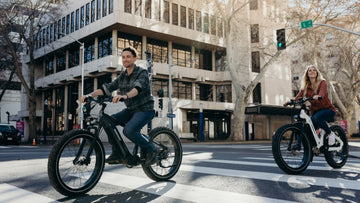Electric bikes have become a popular mode of transportation and recreation for many people, offering an eco-friendly and efficient alternative to traditional bicycles and cars. Like conventional bicycles, electric bikes require a reliable braking system to ensure rider safety and control.
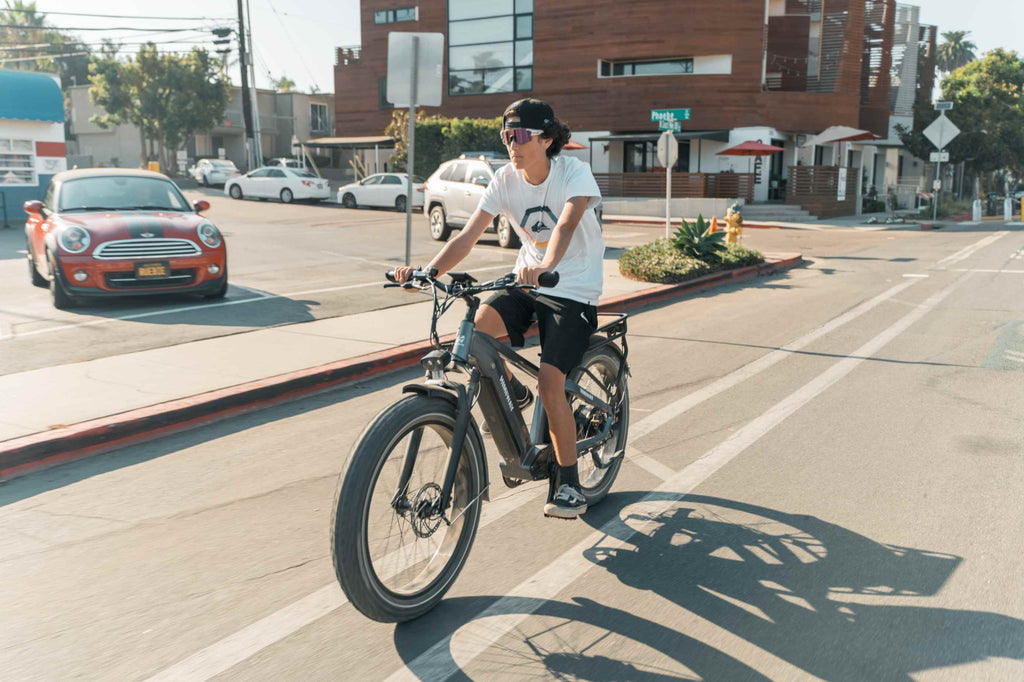
However, electric bikes often travel at higher speeds and carry more weight than traditional bicycles, making the choice of braking system even more critical.
This guide will examine everything you need about electric bike brakes. We'll cover the different types of brakes available for e-bikes, factors to consider when choosing e-bike brakes, how to maintain them, and more.
By the end of this guide, you'll be left with a better understanding of e-bike brakes and be able to make an informed decision when choosing the right brake system for your electric bike.
The Basics of Electric Bike Brakes
Electric bike brakes function in the same way as traditional bicycle brakes, but they have to handle more weight due to the presence of an e-bike battery and motor.
Different Types of Electric Bike Brake Systems
There are two main types of electric bike brakes: rim brakes and disc brakes.
Rim Brakes: Rim brakes are the more common type of electric bike brake, and they work by using friction to slow the bike down. They operate by pressing brake pads against the rims of the wheels. There are two sub-types of rim brakes: caliper brakes and V-brakes. Caliper brakes are found on road bikes and are lighter, but they can be less powerful. V-brakes are more powerful and found on mountain motorbikes.
Disc Brakes: On the other hand, Disc brakes use a rotor and brake pads to slow down the bike. They are more powerful than rim brakes and are preferred by many riders for their superior stopping power and consistency. There are two sub-types of disc brakes: mechanical disc brakes and hydraulic disc brakes. Mechanical disc brakes use a cable to activate the brake, while hydraulic disc brakes use a fluid to activate the brake.
Components of an Electric Bike Brake System
The components of an electric bike brake system can vary depending on the type of brakes used, but generally, they include:
Brake Levers: The brake levers are used to activate the brake system. When the rider squeezes the brake lever, it pulls on a cable or activates a hydraulic system, which applies pressure to the brake pads.
Brake Pads: The brake pads are part of the brake system that makes contact with the wheel rim or disc rotor to slow down or stop the bike. They can be made from various rubber, metal, or ceramic materials.
Calipers: Calipers are the mechanism that holds the brake pads in place and applies pressure to them when the brake lever is squeezed. They can be either mechanical or hydraulic.
Brake Cables: In a mechanical brake system, the brake levers are connected to the calipers by a cable. When the lever is squeezed, it pulls on the cable, which applies pressure to the brake pads.
Brake Rotors: In a disc brake system, the brake pads squeeze a rotor mounted to the wheel hub to slow down or stop the bike. The rotor can be made of various materials, such as steel or aluminum.
How do Electric Bike Brakes Work?
Electric bike brakes work the same way as traditional bicycle brakes, with the added complexity of the electric motor and controller.
Rim brakes are the most common type of brake found on electric bikes. They press brake pads against the wheel's rim to slow or stop the bike. The brake pads are typically made of rubber or other materials that grip the wheel's rim when pressure is applied. When the rider squeezes the brake lever, the cable pulls the brake pads towards the rim, creating friction and slowing the bike.
Disc brakes are becoming more popular on electric bikes because they offer better stopping power and are less affected by wet or muddy conditions. Disc brakes work by pressing brake pads against a metal disc or rotor attached to the wheel hub. When the rider squeezes the brake lever, hydraulic fluid or a cable pulls the brake pads towards the rotor, creating friction and slowing the bike.
The brake system is often integrated with the motor and controller on electric bikes to provide regenerative braking. Regenerative braking is a feature that converts some of the kinetic energy of the moving bike into electrical energy that is stored in the battery when the rider applies the brakes. This can help extend the range of the bike by reducing the amount of power needed from the battery to accelerate again.
Factors to Consider When Choosing Electric Bike Brakes
Riding Style and Terrain
When choosing electric bike brakes, it is crucial to consider your riding style and the terrain you will be riding on. Different brakes are designed to perform better in different situations, so understanding your needs and preferences can help you make an informed decision.
For example, if you are an aggressive rider who enjoys high-speed descents or technical mountain biking, you may consider hydraulic disc brakes. A hydraulic brakes bike like the Himiway Cobra is ideal for this type of terrain; it comes with a Tektro 180MM hydraulic brake and aluminum alloy comfort grip brake levers with a motor cutoff switch fit to ride in mud or snow.
Weight of the Rider and Bike
The braking system of an electric bike needs to be strong enough to slow down and stop the combined weight of the rider and bike.
If the braking system is not powerful enough, it may not be able to stop the bike quickly or may even fail, which could lead to accidents or injuries. Therefore, it's essential to choose brakes that can handle the weight of both the rider and the bike.
Different types of brakes have various weight capacities and braking power.
Budget
Electric bike brakes come in various types and price points, and it's essential to understand how much you're willing to spend before making a purchase. One of the main factors that can affect the cost of electric bike brakes is the type of brake.
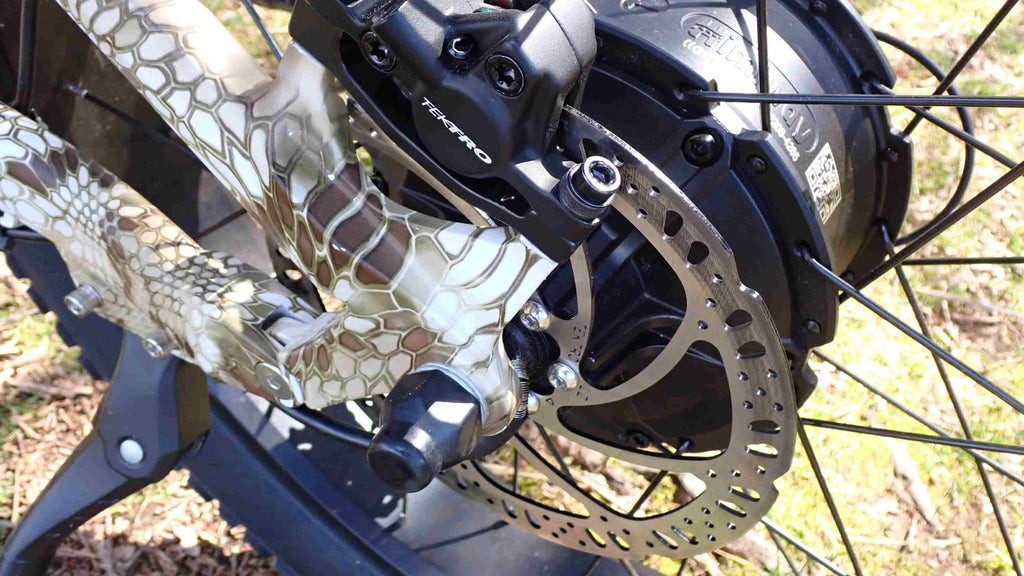
Hydraulic brakes are the most expensive option, but they offer the best stopping power and require minor maintenance.
Another factor to consider when considering the budget is the brake and battery maintenance required. Rim brakes are the easiest to maintain, requiring simple adjustments and regular pad replacements.
Disc and hydraulic brakes may require more frequent maintenance, such as bleeding the brake lines or replacing the brake fluid. One of the best budget-friendly long-range electric bikes with a hydraulic brake is the Himiway Zebra.
The Himiway electric fat tire bike has a powerful 750W gear hub motor and upgraded inner ring. The design of the 26-inch Kenda fat tire strengthens the traction, avoiding slipping on the ground and sinking in mud or snow. It also comes with hydraulic brakes of Tektro 180MM, which is ideal for rugged terrain.
Brake Pad and Rotor Compatibility
Brake pads and rotors are two primary components of a disc brake system commonly used on electric bikes.
The brake pads are the replaceable inserts that clamp onto the rotor to slow or stop the wheel. The rotors are circular metal discs mounted to the wheel hub and spin with the wheel.
Not all brake pads are compatible with all rotors, and using incompatible components can result in poor braking performance or even damage to the components. Therefore, it is vital to ensure that the brake pads and rotors are designed to work together.
Maintenance and Care of E-bike Brakes
Periodic Checks
Regular checks can ensure your brakes are working correctly and reduce the risk of accidents.
Here are some things you can do as part of your periodic checks:
Check the brake cables: Make sure that the brake cables are not frayed or damaged. If they are, replace them immediately.
Check the brake levers: Test them to ensure they are working properly. Make sure they are not loose or wobbly.
Check the brake fluid: If you drive a hydraulic brakes bike, check the brake fluid level. If it is low, top it up. If the fluid is discolored or has air bubbles, you may need to bleed the brakes.
Cleaning Tips
Cleaning your electric bicycle brakes regularly is another vital part of their maintenance and care. Here are some tips to help you clean your e-bike brakes effectively:
Use a clean rag: Start by wiping the brake calipers and pads with a clean rag. This will help remove any loose dirt or debris.
Use alcohol: If your brakes are particularly dirty, use isopropyl alcohol to clean them. Apply the alcohol to a rag and use it to wipe the brake calipers and pads.
Avoid water: Avoid using water to clean your e-bike brakes, which can damage the brake pads and reduce their effectiveness.
Replacing Brake Pads and Rotors
Over time, brake pads wear down and become less effective at stopping the bike, while rotors can become warped or damaged, leading to reduced braking performance or even dangerous brake failure.
Look for signs of wear, such as thinning brake pads or grooves in the rotor surface. If your pads are less than 1mm thick or your rotors are visibly damaged, it's time to replace them.
Bleeding the Brake System
Bleeding the brake system involves removing any air bubbles or contaminants from the brake fluid, which can cause the brakes to feel spongy or reduce their stopping power.
You'll need a brake bleeding kit, brake fluid (make sure to use the specific type recommended by the brake manufacturer), and a catch basin to collect any spilled fluid.
Common Brake Issues and Troubleshooting Tips
Squeaking Brakes
Squeaking brakes are caused by the brake pads' vibration against the rotor, often due to a buildup of dust, debris, or rust on the brake components. If you hear a persistent squeaking noise when you apply the brakes, addressing the issue promptly is important, as it may indicate a safety concern or potential damage to your braking system.
Here are some troubleshooting tips for addressing squeaking brakes:
- 1. Clean your brakes pads
- 2. Replace the brake pads.
- 3. Lubricate brake components
- 4. Check the brake alignment.
Loose or Slipping Brakes
Loose or slipping brakes are issues that can be caused by various factors, including worn brake pads, a loose brake caliper, or low brake fluid can cause. Here are some troubleshooting tips to help you diagnose and fix the problem:
- 1. Check the brake cables.
- 2. Inspect the brake pads.
- 3. Adjust the brake caliper.
- 4. Bleed the brakes.
Over-Heating Brakes
Overheating brakes are among the most common issues with e-bike brakes, particularly on long downhill rides or in stop-and-go traffic. If not addressed promptly, this can lead to reduced braking performance and even brake failure. Here are some common troubleshooting tips:
- 1. Adjust your riding style.
- 2. Upgrade your brake pads.
- 3. Reduce weight
- 4. Check your brake system for damage.
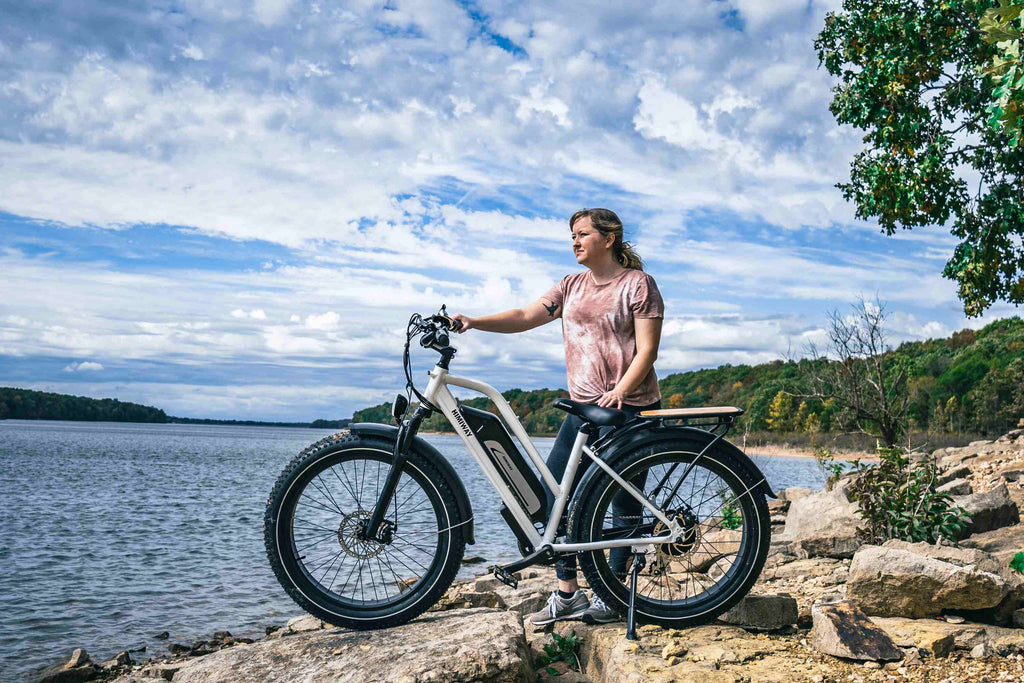
Unresponsive or Sticky Brakes
Unresponsive or sticky brakes are caused by Worn brake pads, Dirt, debris on the brake rotors, Stretched or frayed brake cables, and Low brake fluid. Here are some troubleshooting tips to help resolve the problem:
- 1. Clean the brake rotors.
- 2. Check the brake cables.
- 3. Bleed the brake system.
- 4. Check the brake fluid level.
Conclusion
Electric bike brakes are crucial to any e-bike, as they should be in the rider's safety checklist. E-bike riders must understand the differences between the types of electric bike brakes and choose the one that best suits their needs and riding style.
Maintaining and servicing electric bike brakes regularly ensures they function correctly and safely. Electric bike brakes can provide a reliable and safe riding experience for years with proper care and attention.

























